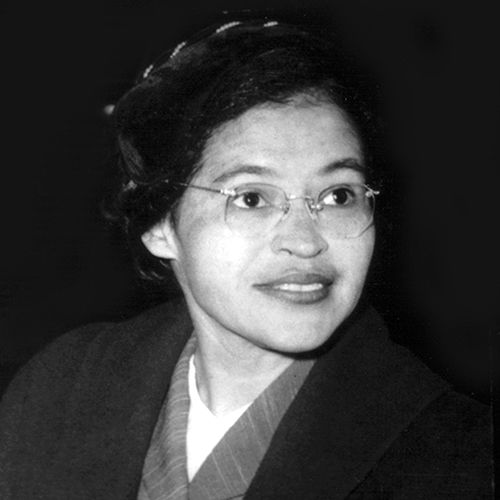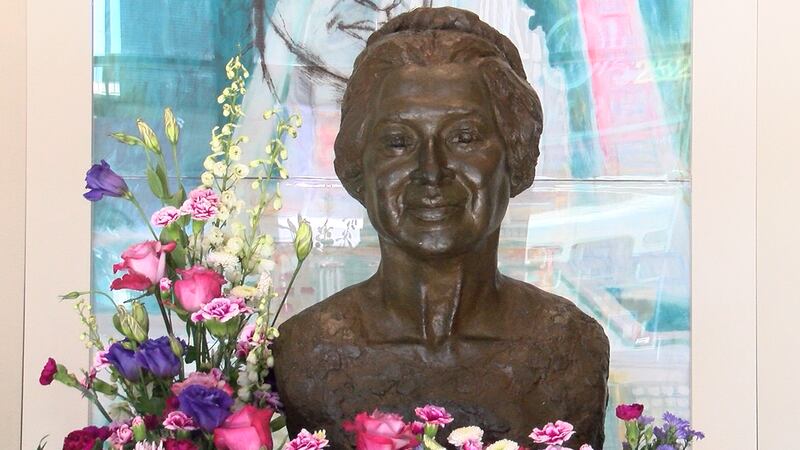
On this day in 1913
Rosa Parks was born in Tuskegee, Alabama. Although she is best known for refusing to give up her bus seat, she was active in the civil rights struggle long before.

She and her husband, Raymond, became involved in the Scottsboro Boys case. In 1943, she became secretary of the Montgomery branch of the NAACP, working on voter registration and investigating a series of sexual assaults of Black women that went unpunished in Alabama. She, too, was the victim of an attempted rape by a white neighbor.
“I was ready to die, but give my consent?” she said. “Never. Never. Never.”
After refusing to give up her seat, she became a worldwide icon and driving force for the civil rights movement.
“I have learned over the years that when one’s mind is made up, this diminishes fear,” she said. “Knowing what must be done does away with fear.”
After her 2005 death, she became the first woman to lie in state at the Rotunda of the U.S. Capitol in Washington, D.C. On the 50th anniversary of her courageous act, transit authorities in New York City and some other cities left the seats behind the bus drivers empty to honor her.

In 2013, Congress added her statue to the U.S. Capitol, making her the first Black woman represented in Statuary Hall. Before her death, she noted that “racism is still with us. But it is up to us to prepare our children for what they have to meet, and, hopefully, we shall overcome.”
Rosa Parks Museum celebrates her 111th birthday

MONTGOMERY, Ala. (WSFA) – Sunday marks 111 years since the birth of civil rights icon Rosa Parks.
Her life and legacy were celebrated in Montgomery on Saturday at Troy University’s Rosa Parks Museum.
“That legacy continues to encourage our youth to take a stand against injustice and to live for what is right,” said Wanda Battle, founder of the Montgomery based Legendary Tours. “As she said, it is always right to do what is right.”
Those in attendance got to see history up close, such as a 1950s era Montgomery city bus. This was the same model of bus that Rosa Parks rode daily and where she had refused to give up her seat.
That bus and the museum are also located at the same spot of the iconic incident.
Parks’ niece was there today, and she says Parks remained active in civil rights work even after the arrest.
“She had a long life of activism before her arrest and after,” said Donna Beisel, Director of Museum Operations. “She was very actively involved in women’s rights, young people’s rights, voting rights. After the boycott, when she moved to Detroit, she became very active in workers’ rights. And so many of these issues that we are still fighting today she was very active in.”
The Rosa Parks Museum has been open since 2000 and was constructed on the site of the former Empire theater.

















:max_bytes(150000):strip_icc():focal(749x0:751x2):format(webp)/Stray-Dog-Shot-4-Times-010225-1-4447be753b8e48d8a4371bcb8ac05cce.jpg?w=1200&resize=1200,0&ssl=1)
:max_bytes(150000):strip_icc():focal(749x0:751x2):format(webp)/firefighters-recue-dog-that-fell-in-icy-pond-1-010226-2239db48a5894b2ca6ea50c805da048f.jpg?w=1200&resize=1200,0&ssl=1)










:max_bytes(150000):strip_icc():focal(731x355:733x357)/Bethenny-Frankel-4-070124-d8f8791218f349288b1c606823df4e0b.jpg?w=1200&resize=1200,0&ssl=1)


:max_bytes(150000):strip_icc():focal(749x0:751x2)/rob-reiner-michelle-121525-fa6b3f711074498bbd85064cd8087ab6.jpg?w=1200&resize=1200,0&ssl=1)








:max_bytes(150000):strip_icc():focal(587x7:589x9)/hilary-duff-1-8885477a9c0e468782157a05b32cb221.jpg?w=1200&resize=1200,0&ssl=1)
:max_bytes(150000):strip_icc():focal(700x500:702x502)/Mickey-Rourke-TEATRO-Even-Summer-White-Affair-041425-01-dda588030a524ffb88242f46d853a6da.jpg?w=1200&resize=1200,0&ssl=1)
